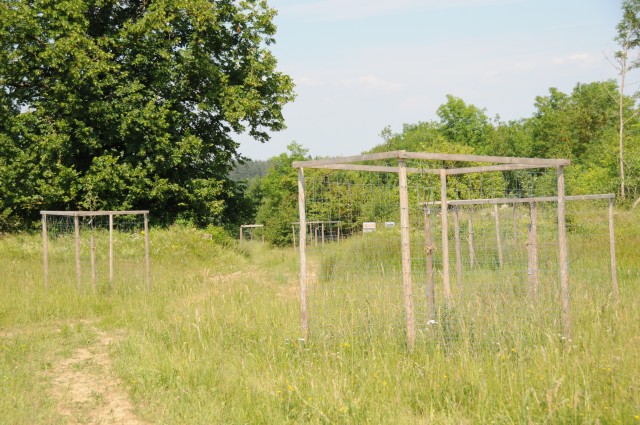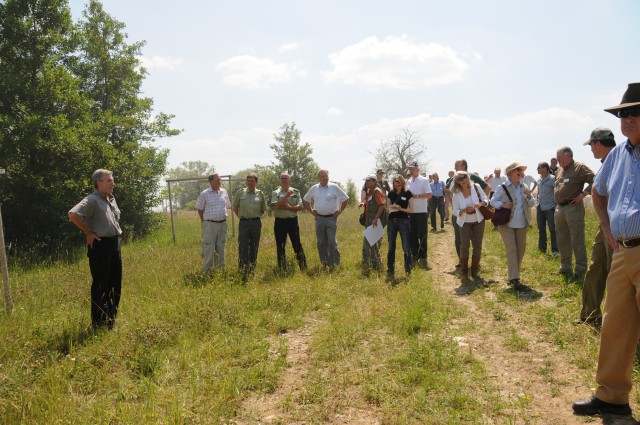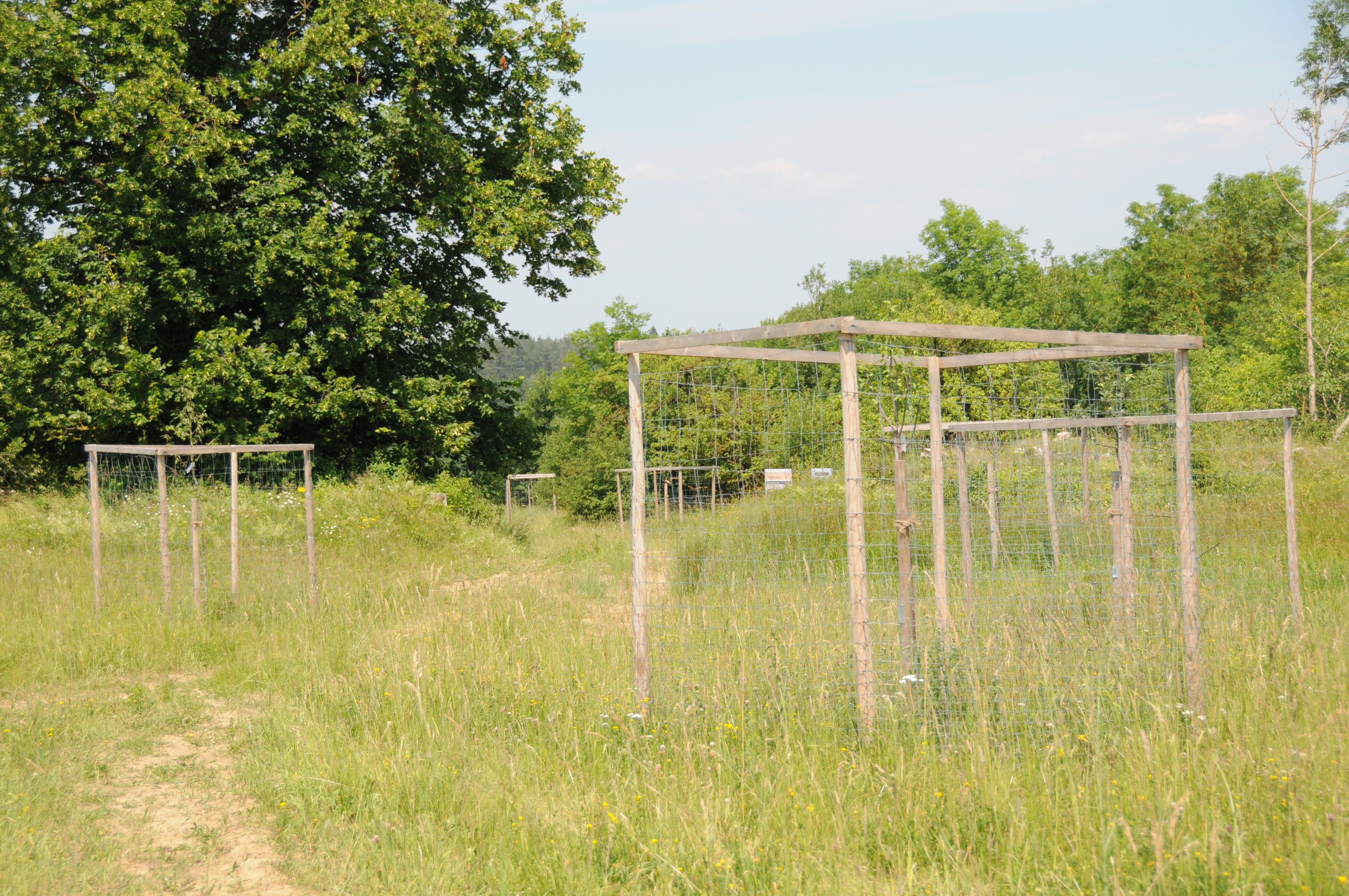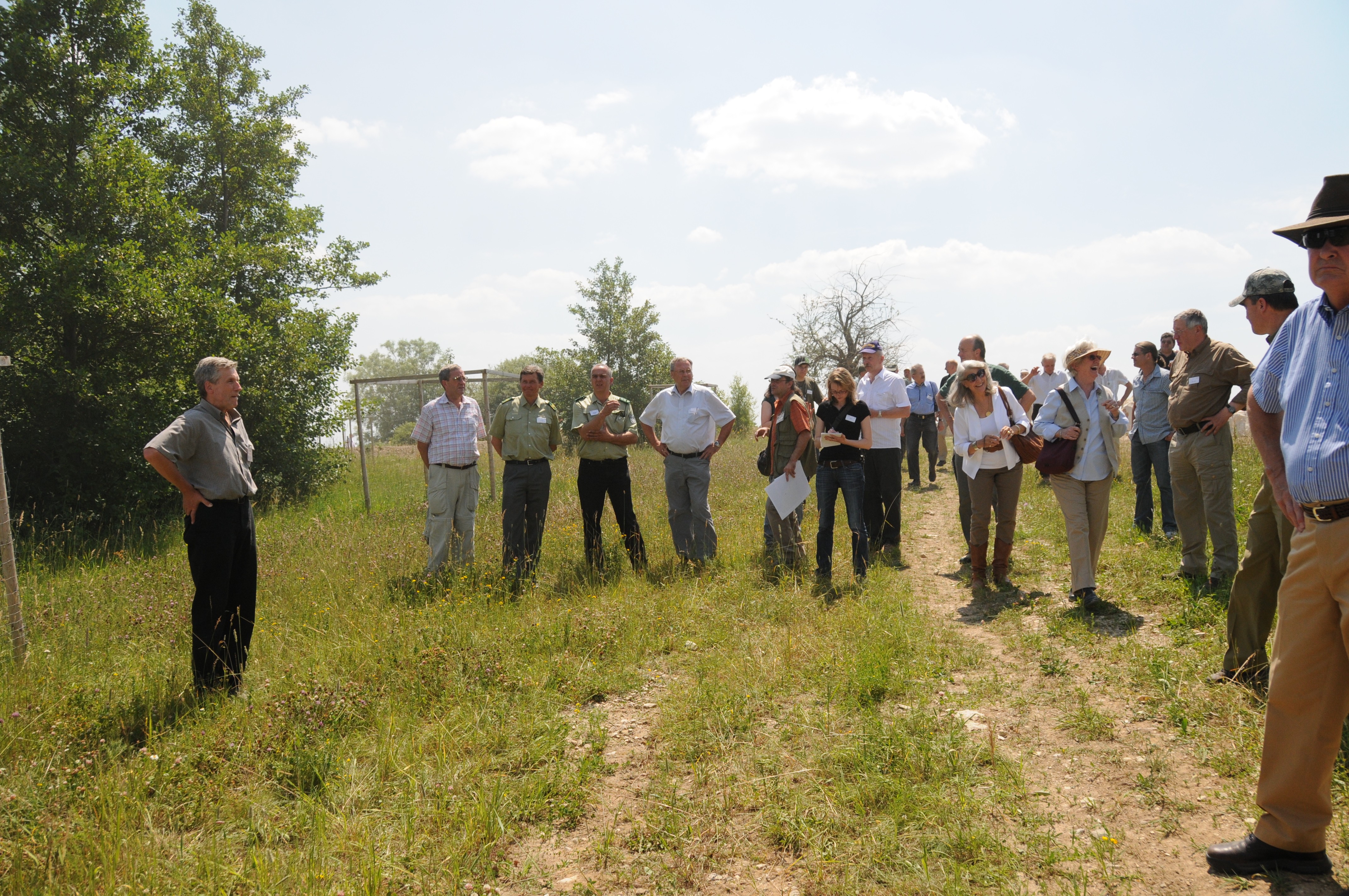GRAFENWOEHR, Germany - U.S. and German dignitaries toured the impact areas on the Grafenwoehr Training Area (GTA), July 2, 2010, as part of the training area's 100-year anniversary celebration.
A unique aspect of the impact area is the large amount of wildlife. The rare German Sea Eagle, Red deer and wild boar are plentiful, but, they are just a few examples of the species that call the training area home.
Despite the Soldiers training on Grafenwoehr's ranges and preparing for war, the natural landscape is peaceful and well-kept. Wildlife thrives. There are beavers, bats and special toads that live among the ranges.
According to Col. Nils C. Sorenson, commander of U.S. Arm Garrison Grafenwoehr, about $12 million is spent annually on environmental programs for conservation and restoration of the natural environment.
"This area is well-preserved, and includes special types of animals, fungi, and plants." said Ulrich Maushake, Grafenwoehr German Federal Forestry Director, "There is also a sanctuary here for the German Sea Eagle. Because the land is a biotope, and very damp, the Sea Eagle can live here."
The tour was hosted by the Grafenwoehr Federal Forestry Department to educate the community about the programs and tactics used to create balance between training and nature.
On Range 132, onlookers saw how noise-levels were buffered using natural resources. By increasing the number of trees in the area, the foliage creates a natural buffer to the sounds of live-fire.
Within the impact area, an area usually only seen by bombs and bullets, tourists saw the remains of old, abandoned towns.
Grafenwoehr's Environmental Division researched and found the families of former inhabitants of Pappenberg, a town relocated during the expansion of the training area in 1938. In 1998 and 2008, church services were hosted for the families in remembrance of the sacrifice made to develop the training area.
"For us it was important to hold the service here," said Maushake. "We feel responsible for the nature here, we owe it to God, so we felt like we needed to thank him and take care of the environment."
Another project managed by the Environmental Division is the preservation of old fruit trees found within the impact area.
"We also help control soil erosion, allowing Soldiers to maneuver over extended distances year-round. Therefore there is a very intensive and close contact with the U.S. offices and agencies responsible for military operations and the practicing units is required," said Maushake. "The work of the Forestry Department help the Soldiers to train more effectively by providing more realistic terrain and range firing scenarios and reducing the amount and severity of range fires, therefore increasing training time."






Social Sharing